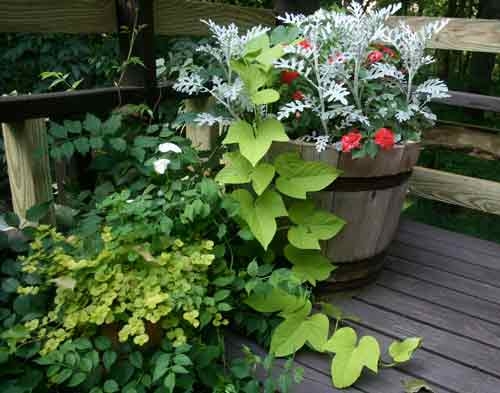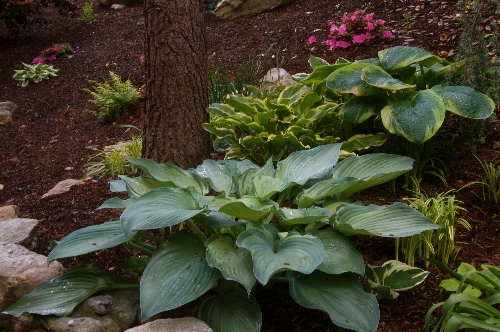Bountiful and beautiful
Sweet potato vines decorating window boxes? Blueberry plants prized more for their foliage than their fruit?
Some flowers and vegetables are as appealing in the home garden as they are on the menu.
"We generally are interested in something to eat when we grow vegetables. In some cases, however, certain vegetable cultivars have been bred and selected for their ornamental characteristics rather than their food quality," said Dan Gill, a Louisiana State University AgCenter horticulturist.
Ornamental sweet potatoes are a prime example, he said.
"They've been really popular in the last 15 or 20 years," Gill said. "The early ones can easily cover 5 square feet. Plant a few in a container and they will fill it in."
Sweet potatoes are vining plants, members of the morning glory family, so they work equally well as low-growing bedding plants, as ground cover, on climbing arbors or trailing from hanging baskets, he said.
"They can be aggressive, however. Breeders are developing hybrids that are less vigorous and that play well in mixed beds with other plants," Gill said. "They do produce an edible crop but they're not that tasty. Gardeners like them more for their colored foliage."
Blueberries are another great multiuse option, said Scott NeSmith, a research horticulturist at the University of Georgia-Griffin campus.
"We're seeking a variety of novel blueberry types, with (an) emphasis on berry colors, plant shape and form, fall color, dwarfness and other interesting traits," he said. "We want consumers to surround themselves with flavorful beauty."
Some other appetizing ornamentals:
n Kale, Swiss chard, parsley, chives, rosemary, sage and mustards.
n Black peppers, chili, sweet peppers and hops. The latter "beautifully and vigorously cover an arbor or fence, and the young strings taste quite good," said Rose Marie Nichols McGee, owner of Nichols Garden Nursery in Albany, Ore.
n Elderberries and strawberries.
n Eggplants, squash and zucchini, cabbages, artichokes and beets.
Just as there are ornamental fruits and vegetables, so, too, are there edible flowers, garden beauties that provide culinary treats. Some nominees:
n Hostas (blooms), daylilies (tubers, buds), dandelions (flowers when picked young), marigolds ("poor man's saffron"), begonias.
n Sunflowers (buds), yucca (petals, fruit), lavender (blooms), nasturtium (leaves, petals).
A couple of cautions, however, about adding flowers to the menu:
"Never use flowers for garnishing unless you know for certain they are edible," said Gill, adding, "Some flowers, like the plants that produce them, are poisonous."
Also, do not eat flowers that may have been sprayed with pesticides or picked along roadsides. Wash flowers thoroughly before plating up, and eat them in small quantities.
"If you're buying a plant off the shelf, wait a month before you use it for culinary reasons," McGee said. "By then, it's probably OK. If you've been growing it yourself and know how it's been handled, there should be no risk. The same goes for anything organic. But if its background is unknown, be careful."





























